On test: Dacia Duster Prestige
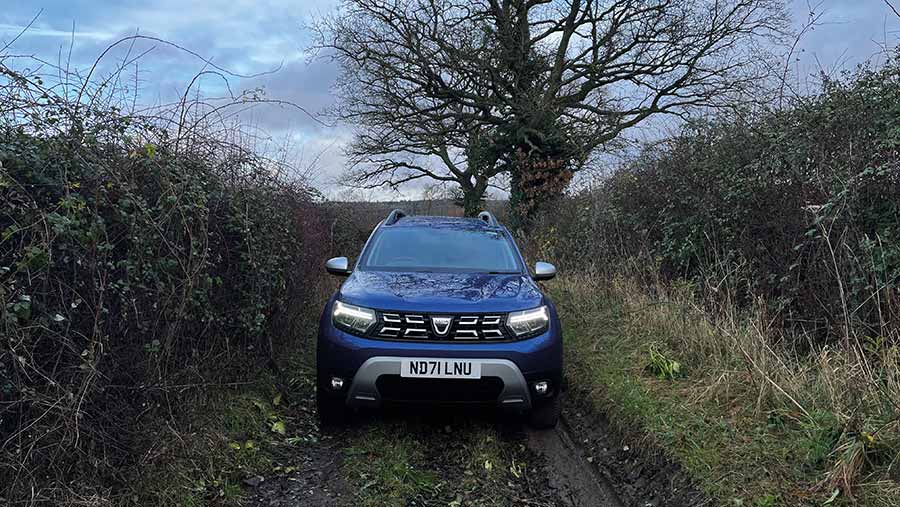 © MAG/Matilda Bovingdon
© MAG/Matilda Bovingdon When the initial attraction just isn’t there, it’s what’s on the inside that counts, right?
Not renowned for good looks or being particularly cool, the Franco-Romanian Dacia Duster isn’t easy to fall in love with – at least not at first sight. It’s not the prettiest, certainly not the quickest… but it may just be the cheapest.
In just over a decade of production, and since the conglomeration with French firm Renault, the Duster has taken on a metamorphosis of sorts.
See also: First impressions: Ford’s four limited edition Ranger pickups
The recent interior upgrades seen in the facelifted second generation bear little resemblance to the model first marketed to the UK in 2010.
The era of scantily specced Dusters has ended and left behind a legacy that lays somewhere between underpromising and overdelivering.
Dacia Duster Prestige
- Engine 1.5 litre
- Power 115hp
- Torque 260Nm
- Transmission Six-speed manual
- Top speed 108mph
- 0-62mph 10.2sec
- Combined consumption 53.3mpg
- Consumption as tested 55mpg
- Towing capacity (braked) 1,500kg
- Ground clearance 210mm
- Warranty Three years/ 60,000 miles
- Essential spec £21,690
- Base price £14,295
It provides relative comfort, plenty of tech, and unexpectedly plush interiors, meaning it is now closer than ever to its competitors and stacks up pretty nicely against the likes of the Suzuki Vitara or the Peugeot 3008.
What’s new?
On the outside, actually not a lot.
The facelifted model is based on the same frame as the previous generation, and features some barely noticeable exterior upgrades, such as a tweaked front grille and rear spoiler, new LED lights and different alloys.
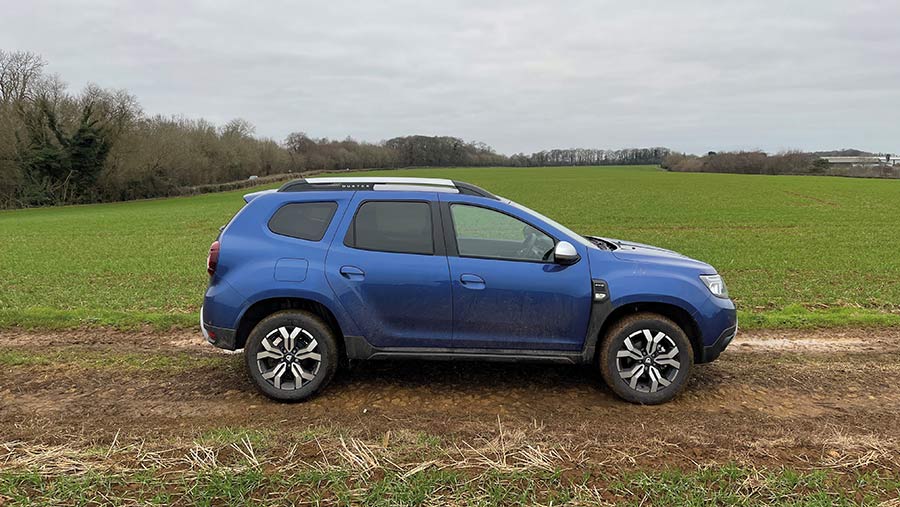
© MAG/Matilda Bovingdon
A more significant upgrade comes in the form of a long-awaited automatic gearbox, though this is only available on the two-wheel drive models.
Interior upgrade
Gone are the days of no-frills interiors and Lada Niva-esque styling, as Dacia has upped its game with plenty of plush knick-knacks and extras.
Keyless entry and ignition are unique to the Prestige model, which also comes with heated seats as standard.
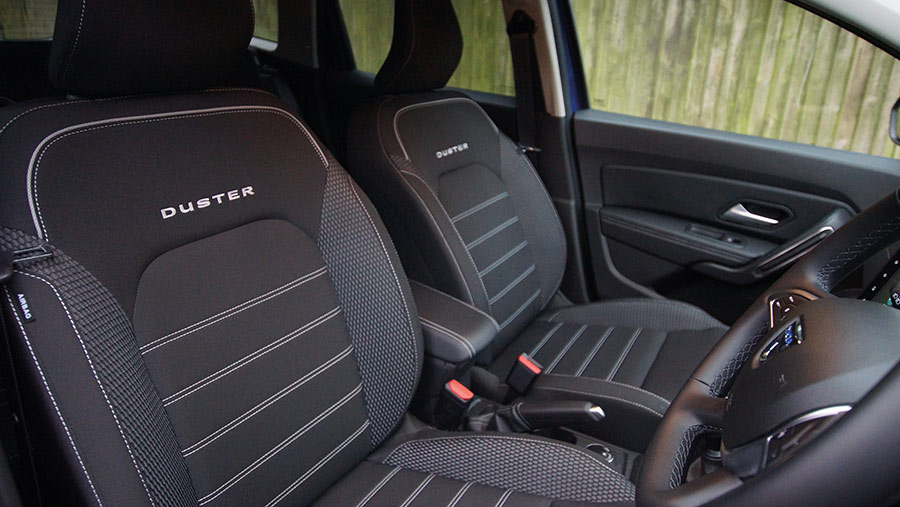
© MAG/Matilda Bovingdon
In terms of internal tech, we’re talking front, rear and side cameras, blind-spot detection, cruise control and climate control.
The 8in display is bigger and better than before, and a series of tweaks and adjustments have reduced road noise feedback.

© MAG/Matilda Bovingdon
There’s also plenty of room in the boot – enough to fit the fine spoils of a shopping trip, some feed bags, or maybe even a sheep or two.
For the hardcore Duster fans out there, these upgrades might be a bit dizzying.
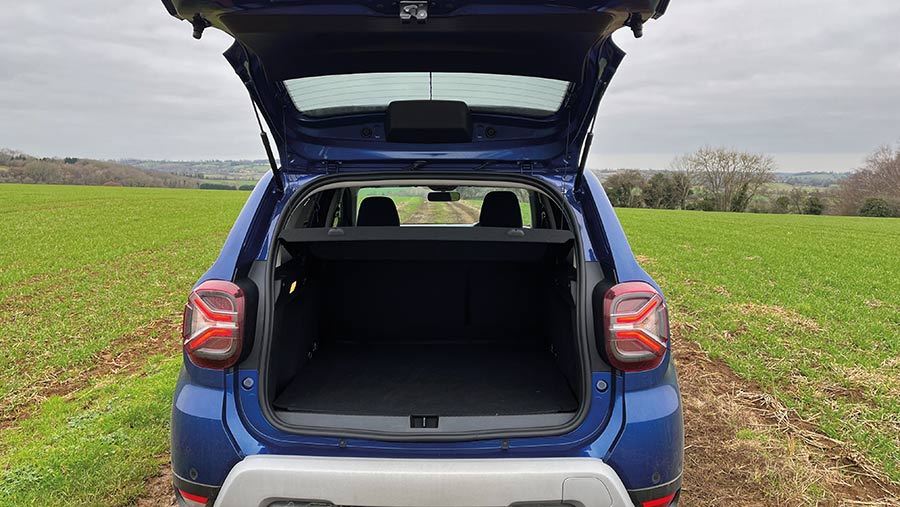
© MAG/Matilda Bovingdon
If a non-fussy set-up is more your cup of tea, then the Essential or Comfort models will be a better match. These trim back the extras, and the pennies, and start from £14,295 and £15,795 respectively.
A workhorse version of the Duster is also available, with an elongated boot rated for a maximum payload of 503kg in place of the rear seats.
It has a price tag of £13,045, and carries all the tax benefits of a commercial vehicle. In terms of spec, it’s available in the Essential and Comfort guises, as either a two-wheel or four-wheel drive.
What’s it like to drive?
A bit of a mixed bag. The 1.5-litre diesel engine sounds like a Transit van and maxes out at 108mph, managing 0-62mph in just over 10sec. So, if it’s speed you’re after, then the Duster probably won’t be your first choice.
Climbing up the gears feels a bit like running a race and covering little ground, as the gearing of the six-speed manual is far too short.
This means pulling out onto a busy roundabout or junction leaves you desperately rushing for second gear, or painfully over-revving in first.
But, in the spirit of penny-saving, the Duster’s fuel efficiency is undoubtedly its redeeming feature. Through field, town and motorways, our diesel test Dacia averaged 55mpg, and a 200-mile test drive barely dented the tank reading.
In a bizarre twist, if you want to party like it’s the mid-noughties, then there’s an LPG-petrol hybrid offering, or a petrol-only engine, though these are likely to deliver fewer miles to the gallon.
Off-road
The Duster isn’t bad off-road. Its 210mm of ground clearance and decent suspension are ample for getting it across fields and bumpy farm tracks, and the ability to lock the rear differential will see you across most tricky spots.
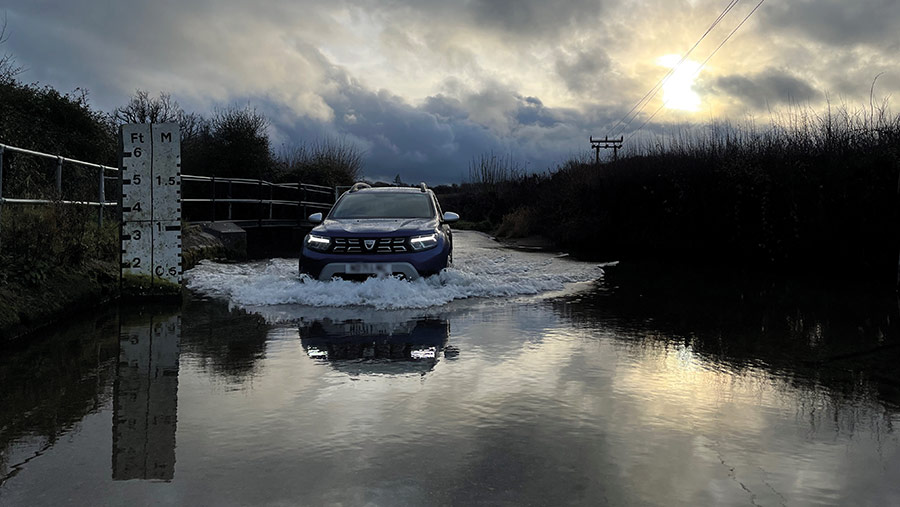
© MAG/Matilda Bovingdon
There’s also a compass, inclinometer and altimeter for those who are really wanting to put it through its green-laning paces.
Euro NCAP
The Renault Zoe recently came under fire for being the third car ever to receive a zero-star NCAP safety rating.
As a subsidiary of Renault, it’s no real surprise that the Duster comes with an NCAP rating that is mediocre at best – three stars puts it behind the vast majority of competitors, such as the five-star rated Seat Ateca and Skoda Karoq.
Likes and gripes
Likes
- Value for money
- Shopping-friendly boot space
- Fuel economy
- Good ground clearance
Gripes
- Plasticky door cards and dashboard
- No mid-setting for heated seats – they are either on or off
- Short gearing
- Mediocre 3-star NCAP rating
FW verdict
It’s comfortable, affordable, and runs on fairy dust.
Cheap and cheerful doesn’t have to mean bland or basic, and Dacia has got the balance just right when it comes to spec and price.
A Duster as tested will set you back £21,690, but those wanting to keep more cash in their pockets and stay true to the no-frills driving style can trim back the spec options and opt for an Essential or Comfort model.
New year, new model
Dacia previewed the concept for a new, larger flagship SUV early last year.
Set to launch later in 2022, most of the details remain a bit of an unknown, except that the imaginatively named Bigster is confirmed to be about 4.6m long.
That will make it Dacia’s largest SUV to date and similar in size to the Volkswagen Tiguan and Discovery Sport.
This is probably where the similarities will end, though, as buyers can look forward to a budget-conscious price tag typical of existing Dacias.
Expect a mix of petrol and hybrid powertrain options – some of which may come from parent company Renault. It will also be the first car to launch with Dacia’s new branding.

